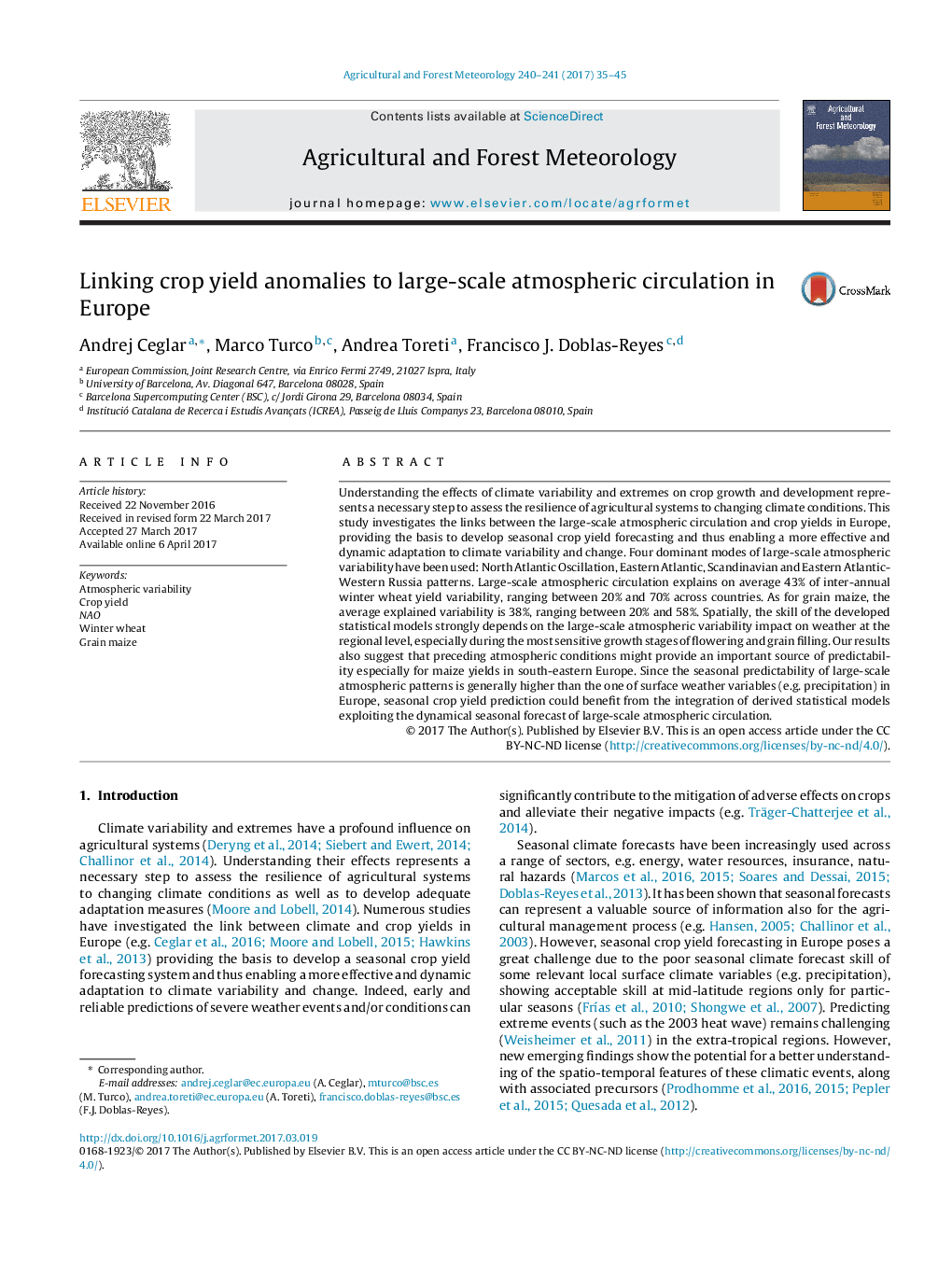| Article ID | Journal | Published Year | Pages | File Type |
|---|---|---|---|---|
| 6457881 | Agricultural and Forest Meteorology | 2017 | 11 Pages |
â¢Links between the large-scale atmospheric circulation and crop yields in Europe are examined.â¢An approach has been developed to identify predictors and build empirical climate-crop yield models.â¢Large-scale atmospheric circulation explains up to 70% of inter-annual crop yield variability.â¢The seasonal crop yield prediction could benefit from integration of derived empirical models into probabilistic framework.
Understanding the effects of climate variability and extremes on crop growth and development represents a necessary step to assess the resilience of agricultural systems to changing climate conditions. This study investigates the links between the large-scale atmospheric circulation and crop yields in Europe, providing the basis to develop seasonal crop yield forecasting and thus enabling a more effective and dynamic adaptation to climate variability and change. Four dominant modes of large-scale atmospheric variability have been used: North Atlantic Oscillation, Eastern Atlantic, Scandinavian and Eastern Atlantic-Western Russia patterns. Large-scale atmospheric circulation explains on average 43% of inter-annual winter wheat yield variability, ranging between 20% and 70% across countries. As for grain maize, the average explained variability is 38%, ranging between 20% and 58%. Spatially, the skill of the developed statistical models strongly depends on the large-scale atmospheric variability impact on weather at the regional level, especially during the most sensitive growth stages of flowering and grain filling. Our results also suggest that preceding atmospheric conditions might provide an important source of predictability especially for maize yields in south-eastern Europe. Since the seasonal predictability of large-scale atmospheric patterns is generally higher than the one of surface weather variables (e.g. precipitation) in Europe, seasonal crop yield prediction could benefit from the integration of derived statistical models exploiting the dynamical seasonal forecast of large-scale atmospheric circulation.
Graphical abstractDownload high-res image (396KB)Download full-size image
